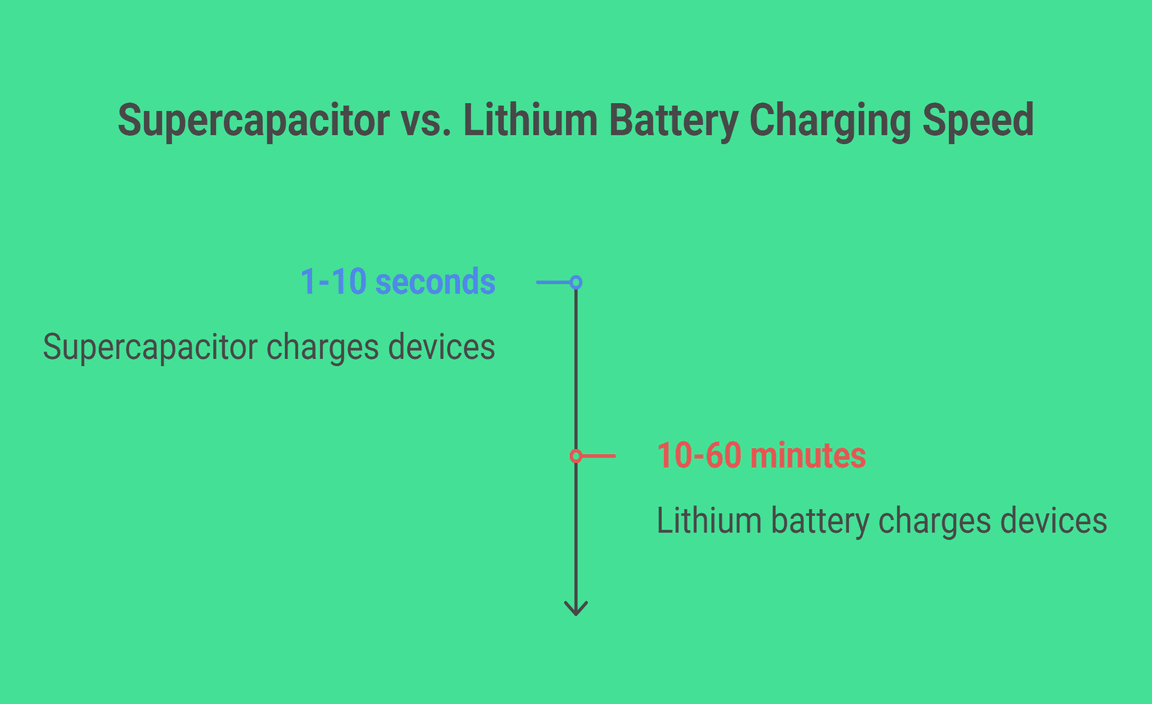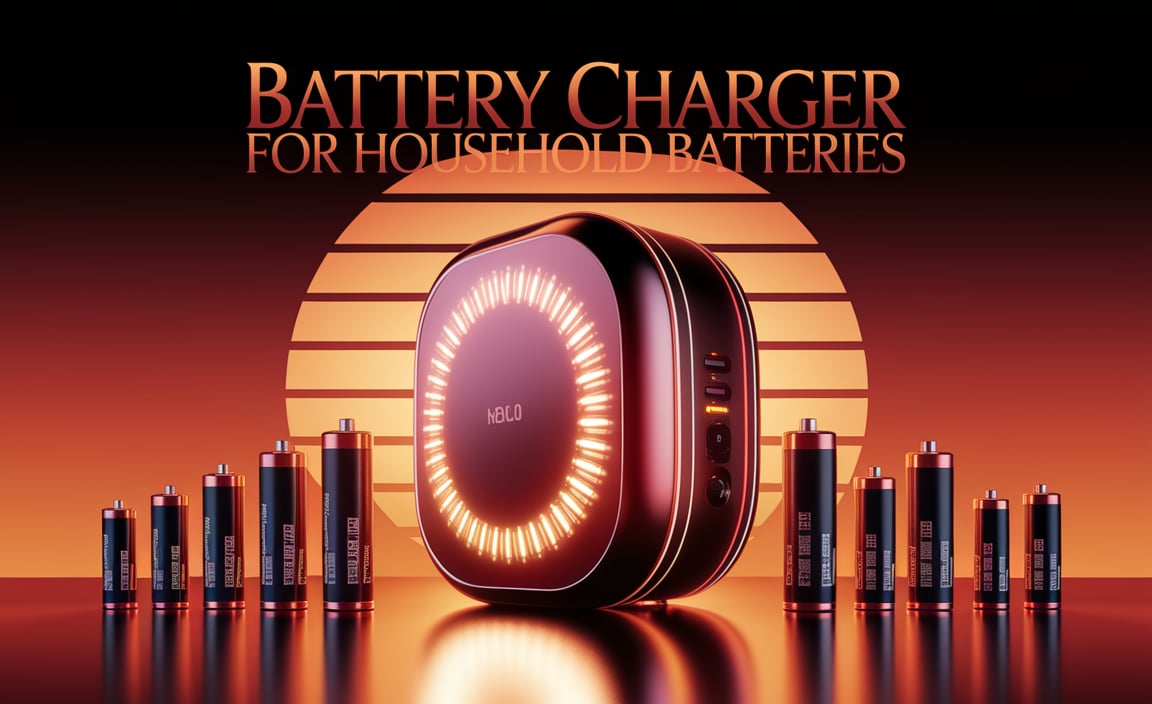Lithium battery and supercapacitor- both are vital in the battery world. Perhaps, you have landed here being merely curious, or it’s your need to compare these batteries.
People love to compare. No matter if it’s their need or something else. In this article, we shall dwell on the differences. And those differences between lithium battery and supercapacitor will be based on some selective standard.
However, instead of rushing towards the differences directly, let us clarify what lithium battery and supercapacitor are first.
Lithium Battery
Lithium batteries are also familiar in the market as lithium-metal batteries. This type of battery features metallic lithium as an anode. You will find a high charge density in these batteries. Here the negative electrode is of carbon. On the other hand, the positive electrode of a lithium battery is a metal oxide generally.
[aawp box=”B01C4PP8FK” description=”none” template=”horizontal”]
You can employ this battery for your small yet essential modern life-leading devices.
Image Source: Saft Batteries
Supercapacitor
A supercapacitor (SC) is also known as ‘ultracapacitor’. This is a superbly-capable capacitor along with a capacitance value far higher than other capacitors. Here power is stored electrostatically on the surface of the material. There is no involvement of chemical reactions in supercapacitors.
[aawp box=”B017F5KMHS” description=”none” template=”horizontal”]
This sort of energy provider is adorable for fast charging and higher power density. It performs various crucial functions like-
- Storing electrical charge
- Providing filtering of noise in electrical circuits, and
- Supplying a source of current under peak demand situations
Image: Supercapacitor, Source: SpringerLink
Lithium Battery vs Supercapacitor
This article is a typical endeavor from us for you as part of our professionalism. We would also be glad it benefits you as we expected. Get a robust comparison in terms of history, cycles, size, application, lifespan, energy density, price, market growth, charging time, manufacturing process, and so on. Want to get the best part?
Please keep reading!
History
The base of lithium batteries grew up in the ’70s. Afterward, Akira Yoshino improved the previous version significantly in 1985. As a result of these endeavors, we came to see the first commercial lithium-ion battery on the market in 1991.
On the contrary, the evolution of supercapacitors’ components began in the ’50s. However, we saw substantial development in 1982. The Pinnacle Research Institute (PRI) developed this for military applications. Later on, the same body marketed these as PRI Ultracapacitor. Then Maxwell Technologies (previously known as Maxwell Laboratories) took over this development in 1992.
Cycles
Generally, a lithium battery shall provide you with 4,000 cycles on average. On the contrary, a supercapacitor can make you smile with a minimum of 50,000 cycles! You see, this is a morning versus evening-like difference.
Charge and Discharge Rating
Did you know the capacity of a battery is generally rated at 1C? It means a completely charged battery will provide you with 1A for one hour that is rated at 1Ah. The fact is, C-rates govern the charge and discharge rates of a battery. Now let’s see the contrast.
Li-ion batteries are confined to a 2C charge and discharging rate, whereas the capacitors can carry up to 5-6 charge and discharging rate.
Size
The size of a battery also matters. So it will be wise to learn about different sizes of both the energy-stuff.
You will have lithium-ion batteries of different sizes. Here are the most common sizes for this type of battery:
- 18650 (18mm diameter, 65mm length)
- 26650 (26mm diameter, 65mm length), and
- 21700 (21mm diameter, 70mm length)
And typically, the supercapacitors are 20 to 100 µm. For example, a 1-farad capacitor can equal a 1-liter soda bottle in size. However, it depends on the voltage it can handle. We measure capacitors in microfarads (millionths of a farad).
Lifespan
Usually, a lithium ion battery lasts for around 2 years. Better you don’t expect it to serve anymore. And generally, it doesn’t fail to perform for a single time during its whole lifetime.
On the opposite, a supercapacitor generally lasts for 10 to 20 years. However, after surpassing a decade, it begins to lose capacity from 80% to 100%. Otherwise, it doesn’t compromise in providing you with a high power density and high load currents during its total lifetime.
Applications
You must have seen aping devices like cigars or pipes. The Li-ion batteries are their powerhouse. Only that?
Oh no, apart from this, you will see its application in various necessary devices such as –
- Laptops
- Cell phones
- Solar power backup storage
- Tablets
- E-Bikes
- Electric toothbrushes
- Scooters
- USB memory sticks
- Pens
- Hoverboards
And that’s the reason the Li-ion battery is regarded as the ‘most prolific battery technology’. It will be energizing in the upcoming days too!
On the contrary, you will find the use of supercapacitors in various crucial engines. These are as follows!
- Automobiles
- Buses
- Trains
- Cranes
- Elevators
- Electric Vehicles (EVs)
We use this type of power for short-term energy storage, regenerative braking, or burst-mode power delivery.
Energy Density
Lithium-ion batteries are favorable for higher energy density applications. A single-time charge can help run your device in the long run. But you can expect to have much more from a capacitor. And that’s the reason it is a fabulous fit for high-drain applications such as energizing an electric vehicle.
Battery Management
This time, allow us to make it clear by comparing lithium battery with the world-renowned Zoxcell supercapacitor battery. Usually, all the lithium batteries include an external balancing board. On the other hand, a supercapacitor like Zoxcell features a battery management system. Undoubtedly, it is more enriched in internal settings than lithium batteries.
Weight and Power
Imagine that a lithium battery and a supercapacitor have the same weight. Which one can hold more power? What do you think?
The fact is, a lithium battery possesses less power. However, supercapacitors are NOT able to discharge slowly.
Manufacturing Process
The manufacturing process of supercapacitors includes the replacement of graphene ink by ink. The ink is a mixture of a few elements. These are –
- graphene
- carbon nanotubes, and
- activated carbon
This mixture increases the physical properties of the electrodes. The core formula governing capacitors is given below:
Charge = Capacitance x Voltage
Or, Q = C x V
On the contrary, the making of the lithium-ion battery comprises three phases. These are as follows:
- electrode manufacturing
- cell assembly and
- cell finishing
The ion-conductive electrolyte looks after the electrode holes by pouring it properly.
Charging Time
It takes only 1 to 10 seconds for a supercapacitor to charge your devices. It is so fast that it can reach up to 1 million cycles. In the opposite picture, we see a lithium battery takes around 10 to 60 minutes to charge your stuff. And it can usually get 500-1000 charge-discharge cycles.

Price
Lithium-ion batteries are expensive. It makes you pay approximately $150 per kilowatt-hour for usual usage. For example, a 50 kWh lithium-ion battery pack costs around $7,000. But if you want such a battery for electric vehicles, you will have to pay $500 to $1,000 per kWh.
However, supercapacitors are more expensive since they survive significantly longer than lithium-ion batteries. They cost $2,400 to $6,000 per kWh of energy storage usually. Apparently, they are more expensive. But if you think of long-run benefits, they are cheaper than lithium batteries.
Market Growth
Did you know the global supercapacitor market size was worth $3.27 billion in 2019? Not merely that, experts expect it to reach $16.95 billion by 2027 at a CAGR rate of 23.3% from 2020 to 2027!
And the global lithium-ion battery market is about to grow at a compounded annual growth rate of 13.0%, according to market analysts. You can see it to be a reality between 2020 and 2027. They assume that it will be approximately $87.54 billion by 2027.
Eco-Friendliness
Earlier, supercapacitors were not environmentally friendly. However, you would be glad to know that new scientific development has made them superbly safe. Now they are pretty suitable for the repeated storage of electrical energy.
Lithium-ion batteries contain and leave less toxic metals than other general batteries such as dry cells. So no doubt, they are far more eco-friendly than supercapacitors.
Popular Brands
Let us tell you the most reliable brands for supercapacitors first. These brands are the best in 2021.
- Rubycon
- Mouser Electronics
- United/Nippon Chemi-Con
- Nichicon
- Admat
- Panasonic
- Aerovox
- Hitachi
- F.W. Webb
Now get the best brands for lithium-ion batteries for 2021. These are as follows!
- Tesla
- Panasonic
- Grepow
- LG
- Samsung SDI
- CATL
- BYD
To Wrap Up
We compare to choose the best. We compare to enhance our knowledge. Whether you are an entrepreneur or an enthusiast looking for making a change, this article will help you. Hopefully, you have secured a fine comparative knowledge of these two power sources.
Resource:
- History of Lithium-Ion Batteries: https://www.energy.gov/eere/vehicles/articles/history-lithium-ion-battery
- Understanding Supercapacitors: https://www.sciencedirect.com/topics/engineering/supercapacitor
- Battery Life Cycle & Degradation: https://www.nrel.gov/transportation/battery-lifecycle.html
-
Battery Market Growth Forecast: https://www.statista.com/statistics/1130345/global-battery-market-size-forecast/



